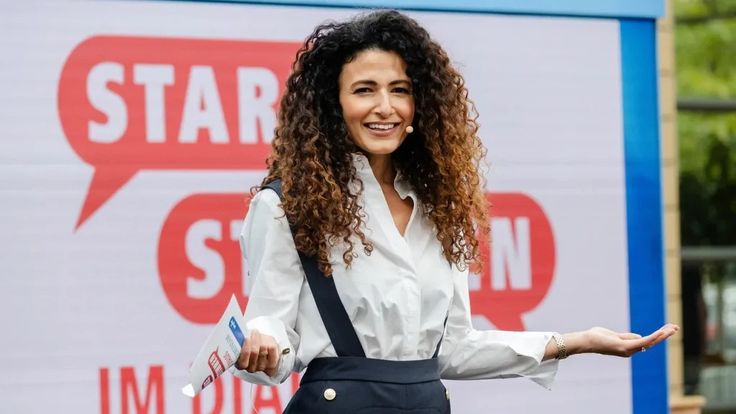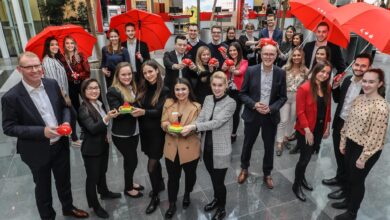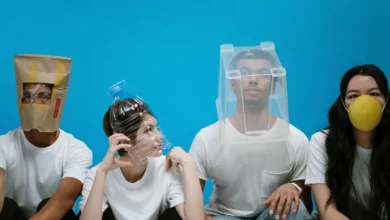Foris (Marwa Eldesouki Figur)The Rising Star in Contemporary Art

In the ever-evolving world of contemporary art, there are always fresh faces and emerging talents that catch the eye of critics and enthusiasts alike. One such rising star is Marwa Eldesouki, whose figurative works under the name “Foris” are making waves in the global art scene. In this article, we’ll explore the fascinating journey of Marwa Eldesouki, the unique qualities of her figurative style, and how she’s carving out a space for herself in the contemporary art world.
Who is Marwa Eldesouki
Marwa Eldesouki, an artist whose work resonates deeply with themes of identity, the human experience, and societal interactions, has become a figure of intrigue in the art world. While her name may not yet be as household as some other artists, Eldesouki’s work has been gaining traction for its emotional depth and powerful storytelling. Operating under the name Foris, a term that translates to “outside” or “beyond,” she presents a distinctive artistic voice that merges both classical and modern influences, forming a unique interpretation of the figurative genre.
Eldesouki’s journey into the world of art began at a young age. Growing up in a family that appreciated culture and creativity, she developed an early fascination with visual arts. As she honed her craft, she realized that her true passion lay in exploring the human form and its expressive capacity, using painting and sculpture as tools for deep personal and societal reflection.
The Foris Figurative Style: A Unique Artistic Language
The figurative style that Marwa Eldesouki has adopted, known as Foris, is marked by its striking combination of traditional techniques and modern sensibilities. This approach allows Eldesouki to portray her subjects in ways that feel both timeless and relevant to current global dialogues.
One of the defining features of Eldesouki’s figurative works is the use of fluid lines and elongated shapes to convey movement and emotion. Unlike more rigid or realistic interpretations of the human body, her figures possess an almost dreamlike quality, where the boundary between reality and abstraction is often blurred. This fluidity allows the viewer to interpret the figures in their own way, depending on their emotional state or personal experiences.
Moreover, Eldesouki’s palette of colors plays a key role in her work. She often uses bold, contrasting hues that are symbolic of emotional intensity, juxtaposing the warmth of reds, oranges, and yellows with the coolness of blues, purples, and greens. These color choices are not random; they are intended to evoke specific feelings and ideas. In some of her pieces, the colors themselves tell a story, subtly guiding the viewer through the emotions or themes the artist is exploring.
Themes of Identity and Human Experience
At the core of Marwa Eldesouki’s figurative work is a deep exploration of identity. Her art is often viewed as a reflection on how individuals interact with their environment and with each other. Through the use of the human figure, Eldesouki delves into the complexities of personal and collective identity, shedding light on both the visible and hidden aspects of the human experience.
The human form in Foris is often presented in ways that suggest both vulnerability and strength. Some figures are depicted in motion, seemingly caught in moments of transformation, suggesting that identity is not static but fluid. This approach aligns with Eldesouki’s belief that humans are constantly evolving, influenced by both internal and external forces. Her figures may be reaching outward, stretching toward something just beyond their grasp, or they may be curled inward, suggesting introspection and the search for self.
Eldesouki’s work also addresses societal themes, touching on the struggles and triumphs that shape individuals’ lives. Issues such as the quest for belonging, personal growth, and emotional resilience are prevalent in her pieces. By incorporating these themes into her work, Eldesouki invites her audience to reflect on their own identities and experiences, sparking a sense of connection through shared understanding.
Sculptural Works: A Tangible Dimension to Foris
While Marwa Eldesouki is primarily known for her paintings, her exploration of the figurative style extends into sculpture as well. Her sculptural works provide an additional layer of depth to her artistic vision, offering a tangible, three-dimensional experience that complements her two-dimensional paintings.
Her sculptures often feature human figures that seem to emerge from blocks of stone or metal, as if the material itself is being transformed by the presence of the figure. These pieces are an extension of the ideas she explores in her paintings—movement, transformation, and identity—but with the added complexity of physical space. Eldesouki uses sculptures to challenge the viewer’s perception of the human body, often manipulating the form in ways that break traditional boundaries of shape and proportion.
Just as her paintings explore emotional depth through color and shape, her sculptures do the same through texture and form. The smooth curves of some pieces contrast with the rough, jagged edges of others, symbolizing the complex nature of the human condition. This duality is central to Eldesouki’s work, emphasizing the balance between softness and hardness, vulnerability and strength.
Impact on the Art World: Recognition and Exhibitions
Marwa Eldesouki’s figurative works under the Foris name have garnered increasing attention from art collectors, galleries, and critics alike. Her ability to blend classical figurative techniques with contemporary interpretations has allowed her to carve out a niche that speaks to both traditional and modern sensibilities. While she may not yet have reached the level of fame enjoyed by more established artists, Eldesouki’s presence in the contemporary art world is undeniable.
Eldesouki’s work has been showcased in numerous exhibitions around the world, from prestigious galleries in Europe and the Middle East to solo exhibitions in New York and London. Her exhibitions often attract a diverse range of audiences, from art connoisseurs to casual viewers, all of whom are captivated by the emotional resonance of her pieces. Critics have praised her ability to convey complex human emotions through seemingly simple figures, noting that her work speaks to universal themes while remaining deeply personal.
In addition to her exhibitions, Eldesouki’s pieces have become highly sought after by private collectors. As her recognition continues to grow, her art is being displayed in both public and private collections, further cementing her position in the contemporary art world.
The Future of Foris: A Growing Legacy
As Marwa Eldesouki continues to evolve as an artist, her Foris style is likely to evolve as well. While she has already established herself as a significant voice in the figurative genre, it is clear that her journey is far from over. With each new piece, she pushes the boundaries of her art, exploring new mediums, techniques, and themes.
Foris represents more than just a name or a style—it is a philosophy, a way of engaging with the world through art. The fluidity and emotion that define Eldesouki’s work suggest that there are still many untold stories to explore. Whether through painting, sculpture, or other mediums, it’s certain that Marwa Eldesouki’s figurative art will continue to captivate and inspire audiences for years to come.
In conclusion, the figurative works of , operating under the name Foris, represent a powerful exploration of the human experience, identity, and emotion. Through her unique approach to the human form, Eldesouki has positioned herself as a key figure in contemporary art, blending traditional techniques with modern sensibilities to create a truly unique artistic voice. As her career progresses, it is clear that her impact on the art world will only continue to grow, making her a name to watch in the years ahead.



